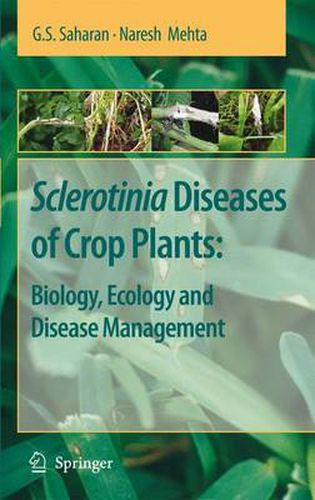Readings Newsletter
Become a Readings Member to make your shopping experience even easier.
Sign in or sign up for free!
You’re not far away from qualifying for FREE standard shipping within Australia
You’ve qualified for FREE standard shipping within Australia
The cart is loading…






This title is printed to order. This book may have been self-published. If so, we cannot guarantee the quality of the content. In the main most books will have gone through the editing process however some may not. We therefore suggest that you be aware of this before ordering this book. If in doubt check either the author or publisher’s details as we are unable to accept any returns unless they are faulty. Please contact us if you have any questions.
The fungus Sclerotinia has always been a fancy and interesting subject of research both for the mycologists and pathologists. More than 250 species of the fungus have been reported in different host plants all over the world that cause heavy economic losses. It was a challenge to discover weak links in the disease cycle to manage Sclerotinia diseases of large number of crops. For researchers and s- dents, it has been a matter of concern, how to access voluminous literature on Sclerotinia scattered in different journals, reviews, proceedings of symposia, workshops, books, abstracts etc. to get a comprehensive picture. With the pub- cation of book on ‘Sclerotinia’, it has now become quite clear that now only three species of Sclerotinia viz. , S. sclerotiorum, S. minor and S. trifoliorum are valid. The authors have made an excellent attempt to compile all the available infor- tion on various aspects of the fungus Sclerotinia. The information generated so far has been presented in different chapters. After introducing the subject various aspects viz. , the diseases, symptomatology, disease assessment, its distribution, economic importance, the pathogen, its taxonomy, nomenclature, reproduction, reproductive structures with fine details, variability, perpetuation, infection and pathogenesis, biochemical, molecular and physiological aspects of host-pathogen interaction, seed infection, disease cycle, epidemiology and forecasting, host resistance with sources of resistance, mechanism of resistance and other mana- ment strategies have been covered.
$9.00 standard shipping within Australia
FREE standard shipping within Australia for orders over $100.00
Express & International shipping calculated at checkout
This title is printed to order. This book may have been self-published. If so, we cannot guarantee the quality of the content. In the main most books will have gone through the editing process however some may not. We therefore suggest that you be aware of this before ordering this book. If in doubt check either the author or publisher’s details as we are unable to accept any returns unless they are faulty. Please contact us if you have any questions.
The fungus Sclerotinia has always been a fancy and interesting subject of research both for the mycologists and pathologists. More than 250 species of the fungus have been reported in different host plants all over the world that cause heavy economic losses. It was a challenge to discover weak links in the disease cycle to manage Sclerotinia diseases of large number of crops. For researchers and s- dents, it has been a matter of concern, how to access voluminous literature on Sclerotinia scattered in different journals, reviews, proceedings of symposia, workshops, books, abstracts etc. to get a comprehensive picture. With the pub- cation of book on ‘Sclerotinia’, it has now become quite clear that now only three species of Sclerotinia viz. , S. sclerotiorum, S. minor and S. trifoliorum are valid. The authors have made an excellent attempt to compile all the available infor- tion on various aspects of the fungus Sclerotinia. The information generated so far has been presented in different chapters. After introducing the subject various aspects viz. , the diseases, symptomatology, disease assessment, its distribution, economic importance, the pathogen, its taxonomy, nomenclature, reproduction, reproductive structures with fine details, variability, perpetuation, infection and pathogenesis, biochemical, molecular and physiological aspects of host-pathogen interaction, seed infection, disease cycle, epidemiology and forecasting, host resistance with sources of resistance, mechanism of resistance and other mana- ment strategies have been covered.